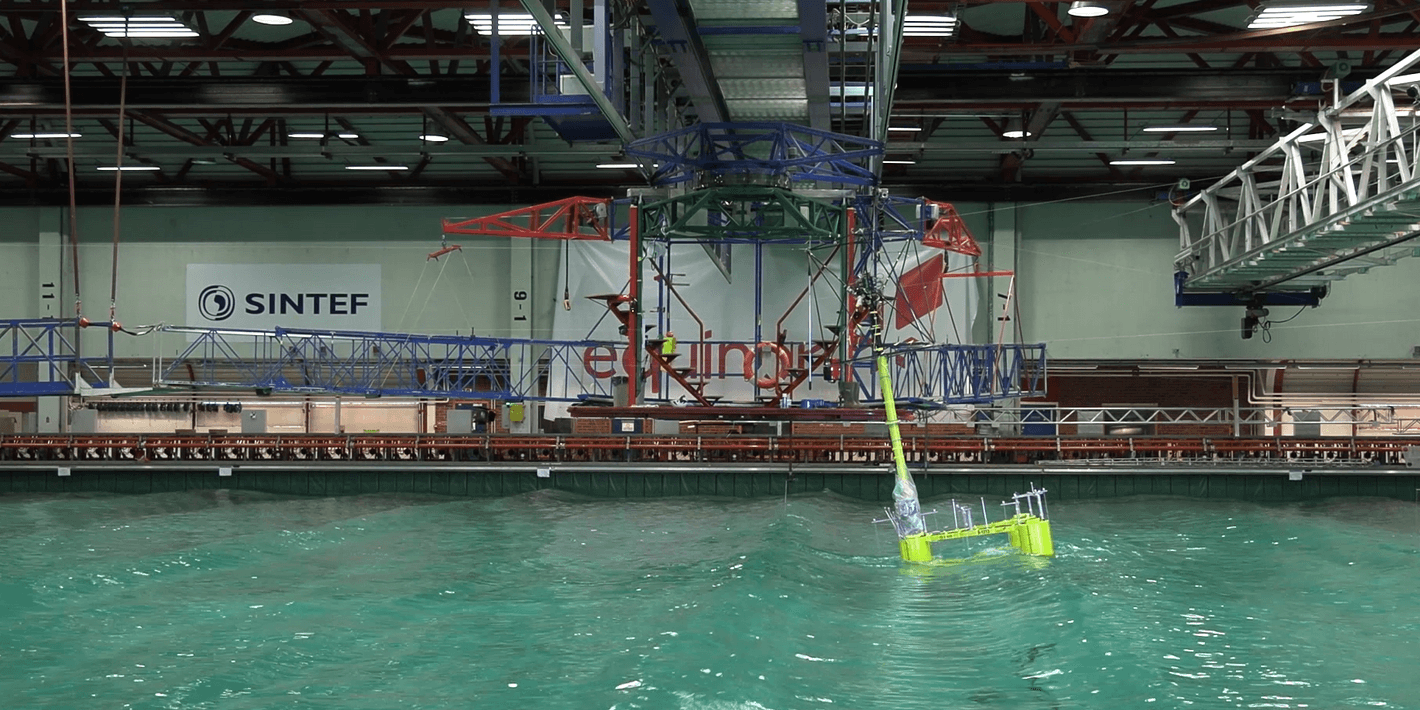Floating Offshore Wind Farm: Will it withstand typhoons?

Equinor Korea has announced the results of model testing for the structures to be installed in the Bandibuli/Firefly offshore wind project, which took place at SINTEF Ocean’s testing facility in Trondheim, Norway from 22nd February to 22nd March, 2023.
SINTEF Ocean is a leading research institute in the field of marine technology and bio-ocean research and has played a crucial role in the development of floating wind turbines since 2005. They have tested the world’s first floating offshore wind turbine demonstration model, known as the Hywind Demo.
The testing aimed to assess the durability and stability of the structures located in the offshore wind farm, taking into account the extreme conditions of wind, waves, and currents in the Ulsan coastal area. The results showed that the structures are capable of withstanding even the most severe typhoons that could occur once every 500 years, including those classified as category 3 on the Saffir-Simpson hurricane scale. The structures also proved to be resilient in the harshest wind conditions observed in Ulsan between 1979 and 2021, including the severe winds of Typhoon Maysak in 2020.
Offshore wind power can be categorized into fixed and floating structures. Fixed offshore wind turbines are installed on towers anchored to the seabed and are typically used in shallow waters. On the other hand, floating offshore wind turbines are installed on floating platforms and are suitable for deep-water areas.
The size of the floating offshore wind structures can reach up to 260 meters, which raises concerns about their stability. However, Equinor, with over 50 years of expertise in marine engineering and project management, is a global leader in the offshore wind industry, ensuring safe and efficient operations. Safety is a top priority for Equinor, and this testing has demonstrated the robustness of the Bandibuli/Firefly offshore wind project in Ulsan’s extreme marine environment.
Click here to see the tank testing video.
Latest News

Equinor Fourth Quarter and Full Year 2024 Results
Equinor delivered adjusted operating income* of USD 7.90 billion and USD 2.29 billion after tax in the fourth quarter of 2024. Net operating income was USD 8.74 billion and net income was USD 2.00 billion, leading to adjusted earnings per share* of USD 0.63.

Equinor to present at GWEC APAC Wind Energy Summit 2024 in Songdo
- Participation of 10 global experts from Equinor across development, supply chain, and operational areas
- Supporting Korea’s renewable energy transition by leveraging global offshore wind leadership

Equinor reaffirms intention to invest in Korea’s renewable energy market
- Investment registration completed at the 2024 Invest Korea Summit following the investment declaration made in 2023 hosted by President Yoon
- Equinor seeks to support the development of Korea’s offshore wind industry and advancing the energy transition